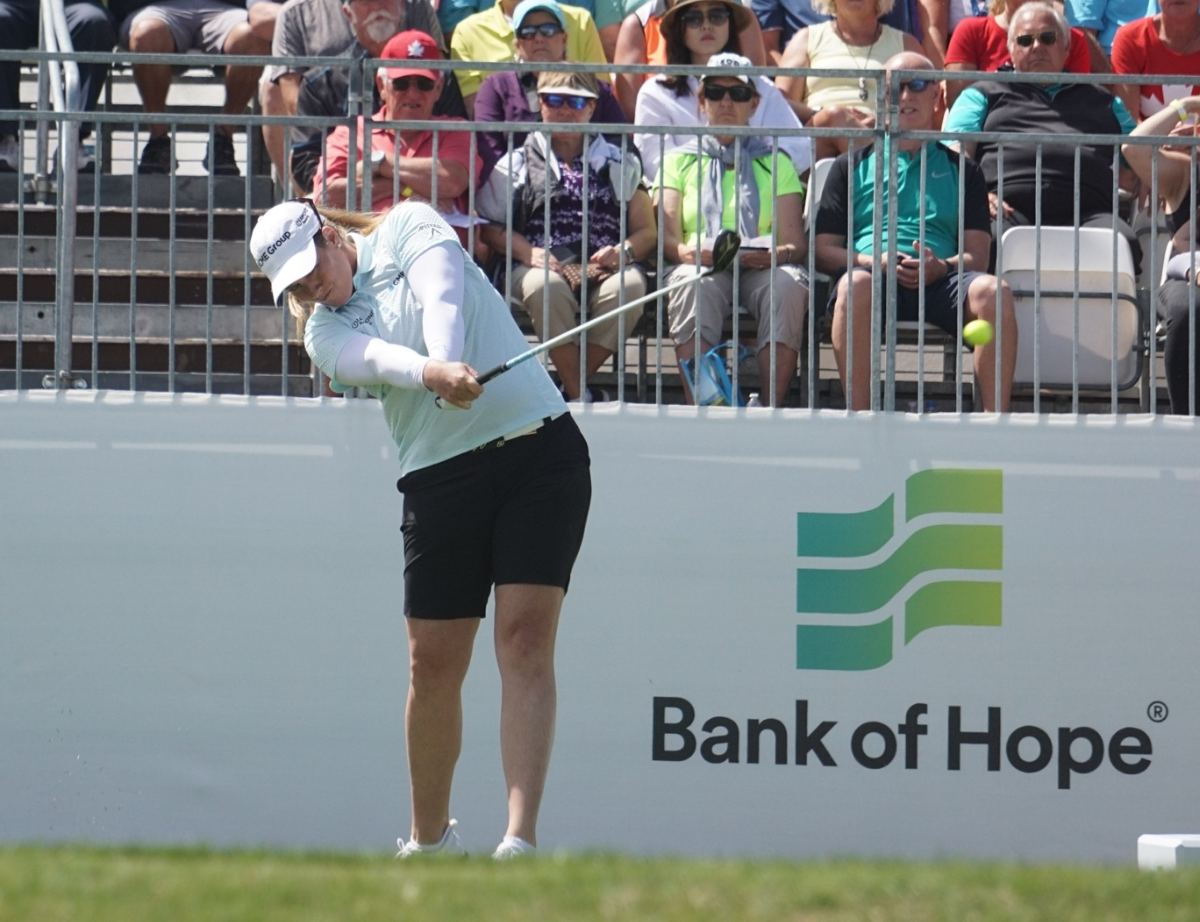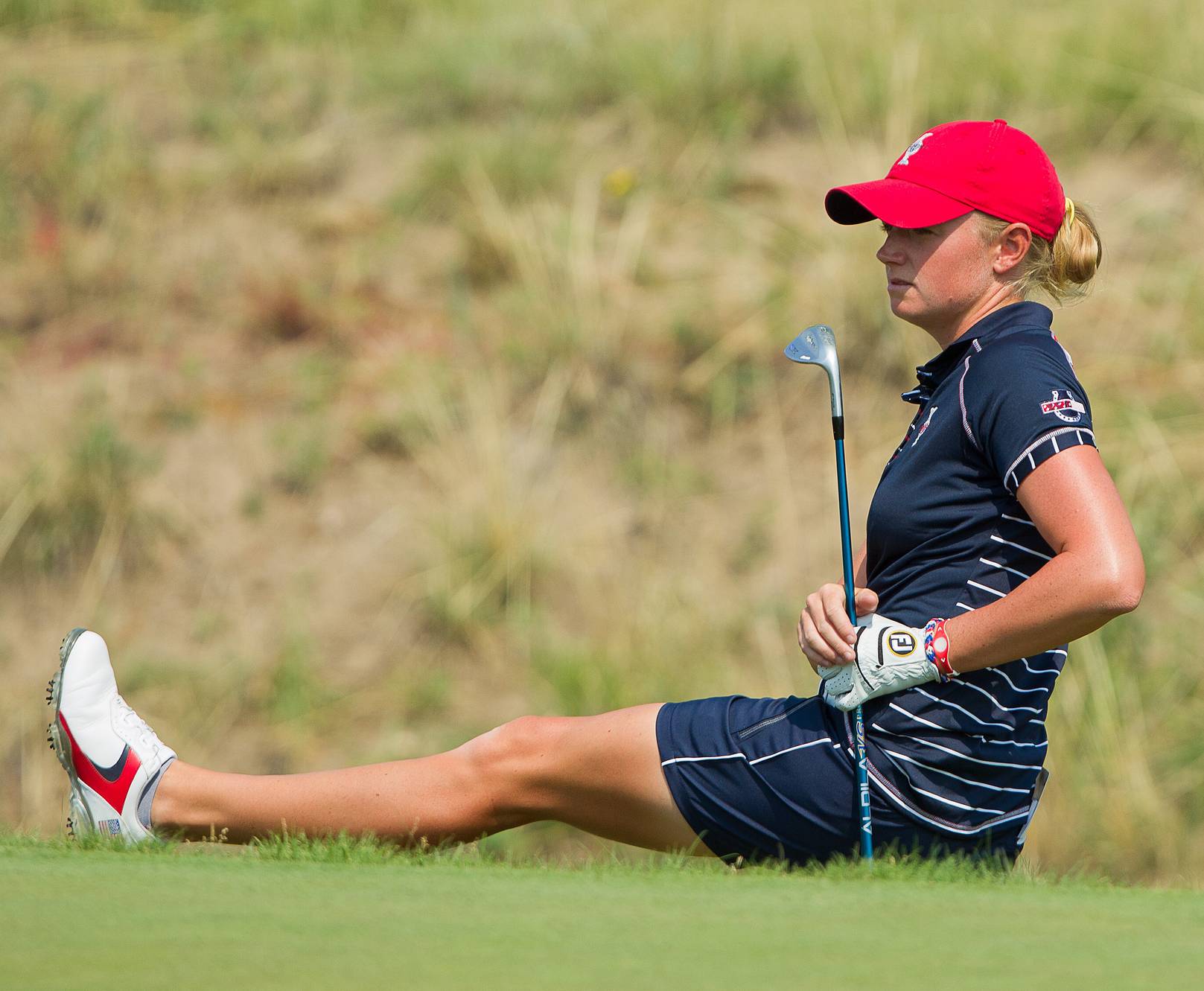Being a professional female athlete is difficult. While her performance is important, it may not be enough. We know her physical appearance can be one of the issues that determine sponsorships and earnings. We realize that sports broadcasters frame her in a different way than her male counterparts when they call a tournament.
But, there is one variable professional male athletes do not have to consider the way professional female athletes must: motherhood.
Don’t get me wrong. Professional male athletes are certainly impacted by a growing family. Phil Mickelson thought he may have to withdraw from the 1999 U.S. Open when he had a chance to win (The baby came a day after the tournament was over and Mickelson finished second. He didn’t miss major that year at all.)
Over the years, we have seen many LPGA players temporarily leave the tour to start or continue to grow their families. We have seen stories of how players continue the grueling weekly schedule of practice, tournaments, and media appearances while also keeping the responsibilities of being a mother. LPGA players have made news by announcing pregnancies, such as Stacy Lewis and most recently, Brittany Lincicome. Other professional players such as Serena Williams and Candace Parker made headlines when each left to have their children, as well.
As happy as these stories are, do any or what implications exist for professional female athletes choosing to have a family?
A 2008 study entitled, “Does Motherhood Affect Productivity, Relative Performance, and Earnings?” explores this question regarding the LPGA specifically. The author gathered data from 1980-2004 to investigate if, in fact, becoming a mother while on the LPGA tour had any impact on the variables of productivity, performance, and earnings.
Before I even read the study, I figured I already knew the answer. I’m going to bet you probably think you know, as well. Regardless, here are some of the findings from the study.
Motherhood negatively affects performance. Mothers with one child experience a decline in relative ranking by 12.5 places. Mothers with two children have about the same result. Two players were mentioned specifically with this finding. Tammie Green, in the five-year period before having a child, made the top 10 money list three times and had an average earnings ranking of 13.8. In the five-year period after having her child, she never finished higher than 43rd place and had an earning ranking of 64. Julie Inkster won 10 tournaments before having her first child and won two in the five-year period after.
In the year a player has a baby, her earnings ranking decreases by 36 places. According to the author, this may be due to physical changes and/or the number of tournaments played.
Players with one child have a decrease in earnings of almost 30%. Players with two children have about the same result.
Motherhood causes golf scores to increase by .20 strokes.
The performance of players up to the time of a birth increases. After having the child, the trend completely reverses.
A player’s earnings increase almost 7% before having a baby and decreases by about 8% after the birth.
The author gives a few reasons as to why players may experience a decrease in these variables. “Mothers are trading time away from practice for childcare responsibilities. Their practice and play may be less focused because of family concerns, like a sick child” (p. 234).

You may have guessed that yes, productivity, performance, and earnings may be impacted by having a child. However, there was one item of note that was included which I found slightly problematic. The author brings in the issue of beauty. The author makes a point to say this was a controlled variable in this study. In other words, the author did not factor beauty as a part of earnings. As we know from a previous article, beauty does, in fact, impact earnings.
As I reflected upon the results, a few questions kept nagging at me. One question was, “Where is the study about the productivity, performance, and earnings on professional male golfers?” I didn’t locate a study about this, but when and if I do, I bet we may be able to guess the finding. (Many studies have shown that in the general workforce after a woman has a child, her earnings decrease while a man’s actually increases.) Another question was, “What was the point of this study anyway?” Did the author simply intend to give us more information to show how yet again female golfers are negatively impacted simply by being female? Or, did the author want to bring to light a few facts to simply explain what may happen to a player’s career if she chooses to have a family? After all, this study was published in a more or less Economics-based journal.
Either way, I believe we can take a few things away from this study. First, we can see professional golf is no different as far as a wage penalty. Women are penalized financially for having children in many industries and professional golf is no different. Second, these findings may help us justify the need for childcare and other support systems for players by the LPGA. We have seen the efforts by the LPGA to assist with childcare while players are actively participating in tournaments and other responsibilities. This is a wonderful addition to the LPGA support system, but we need to ensure players are always receiving this support, in all places and in all ways. Recent changes in the maternity policy may fall under this along with how contracts are written when players take maternity leave.
Finally, this study can remind us of the awesomeness of women’s golf. This game is for young women and mature women. It is for single, married, partnered, mothers, non-mothers, grandmothers, sisters, aunts, and even those with fur-babies who are considered children. Women’s golf allows for many options for us to play when, where, and how we choose. Women’s golf is a game which teaches us not only how to be stronger as a player but as a person given all its life lessons. So, a player’s productivity, performance, and ranking is not just what others say it is. It’s what she chooses it to be.
Reference:
Kalist, D. (2008). Does motherhood affect productivity, relative performance, and earnings? Journal of Labor Research, 29, 219-235.























